Carlotta Hey is intimately familiar with the realm of fashion, an artistic extension that seems intertwined with her background in design and styling. In this space, she creates a visual representation that becomes a conduit for expressing emotional connections. Capturing a unique perspective, Carlotta melds style into something much deeper. Going beyond sketches and paintings, her work evolves into a medium of storytelling and each creation is an antidote of personal identity, societal trends, cultural influences, and the powerful impact fashion, as self-expression, has on our lives. If you can’t say it, wear it… create a dialogue beyond spoken words.
Carlotta invites us to explore the relationship between what we wear and who we are, offering a visual commentary on the ever-evolving narrative of style and identity. Merging fashion-inspired illustrations with the rapid strides in technological advancement, her latest series, titled ‘”Humanity and Mechanism”, echoes with layered meaning. Delving deep into her work, and its underlying influences, this series explores the intersection where humanity converges with the precision of machines.
Nuanced and familiar, what is hidden still highlights the levity of our sensibilities, and we embrace the enigma of her muse. The voice of her vison becomes palpable, much like how wearable art articulates itself with change and freedom.
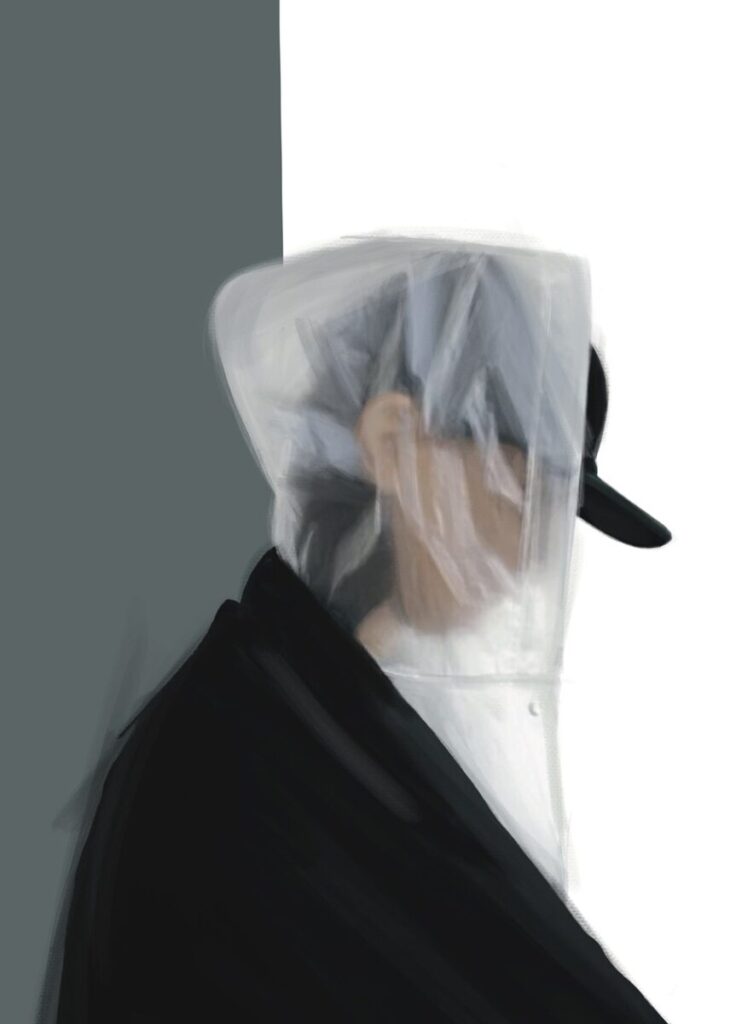
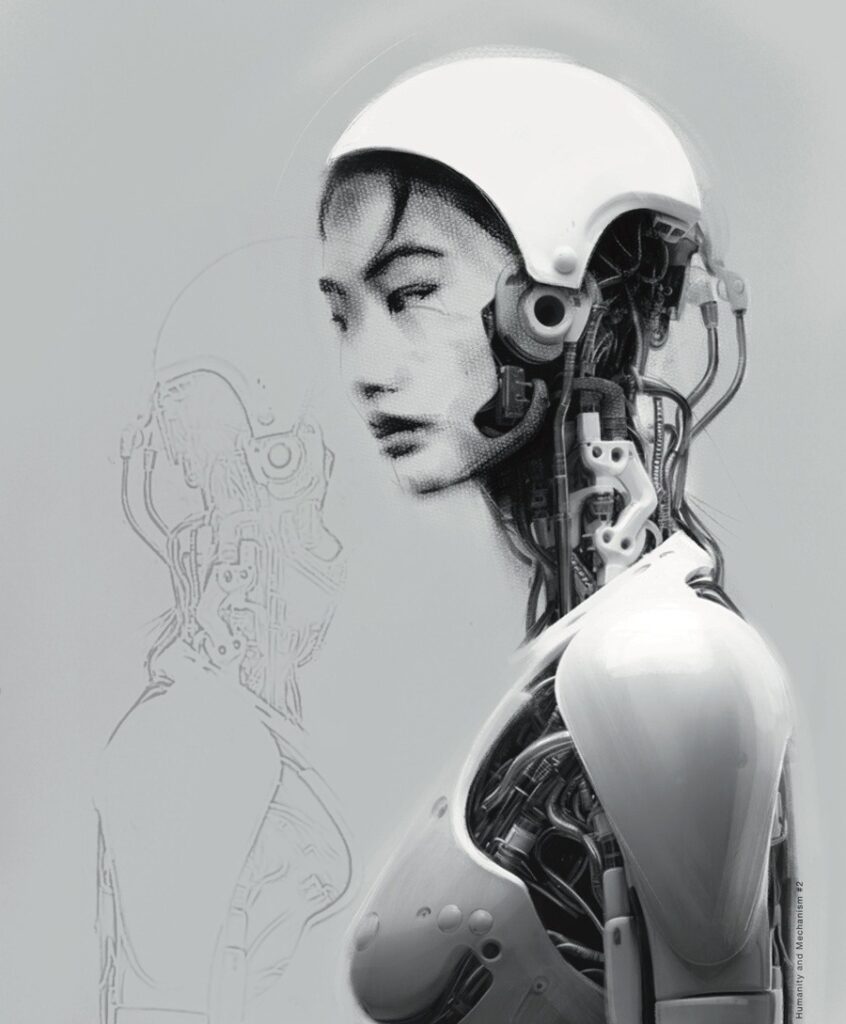
Inspired by the integration of technology in our lives, this collection reflects the relationship between fashion and invention. The compositional complexities and spirit of her work draws from the latest trends in wearable tech, and the aesthetic appeal of cyberpunk. But this is more than painted garments, it’s a lasting sensory experience that speaks the love language of the human body and its necessity for communication in all forms.
By examining how technology influences design, Carlotta Hey, piques our senses and lets us lean into the future of creativity through fashion in a world driven by technological innovation. Each element speaks the universal code of expression and balances the ever-changing landscape of the unknown. Immerse yourself in this exclusive interview and learn how Carlotta Hey’s work becomes a creation of new icons and limitless potential.
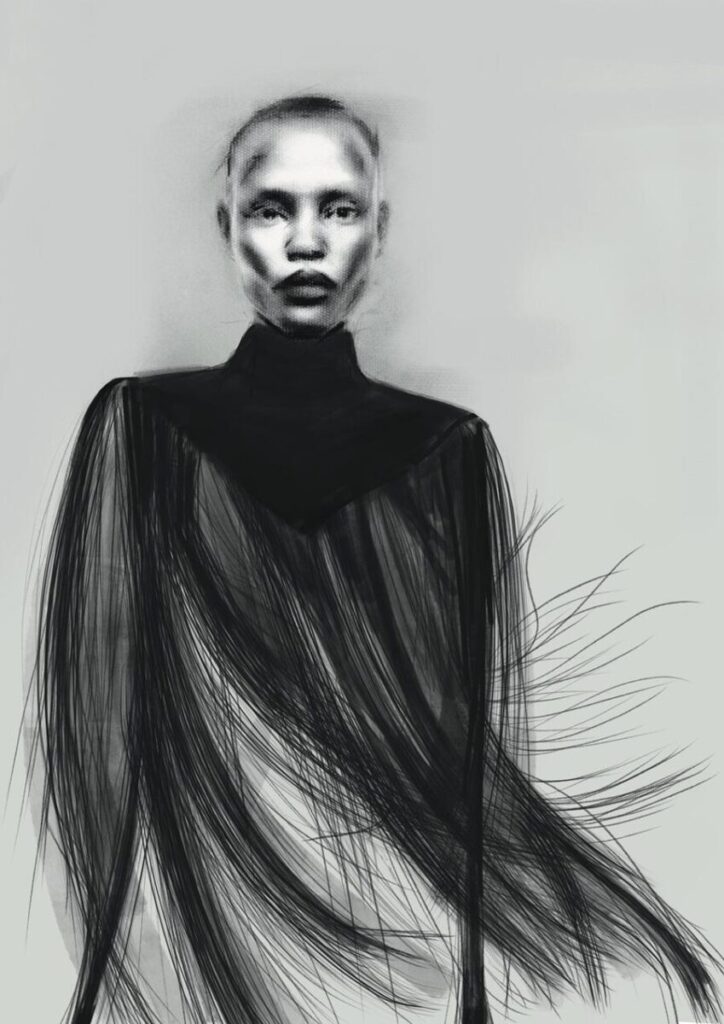
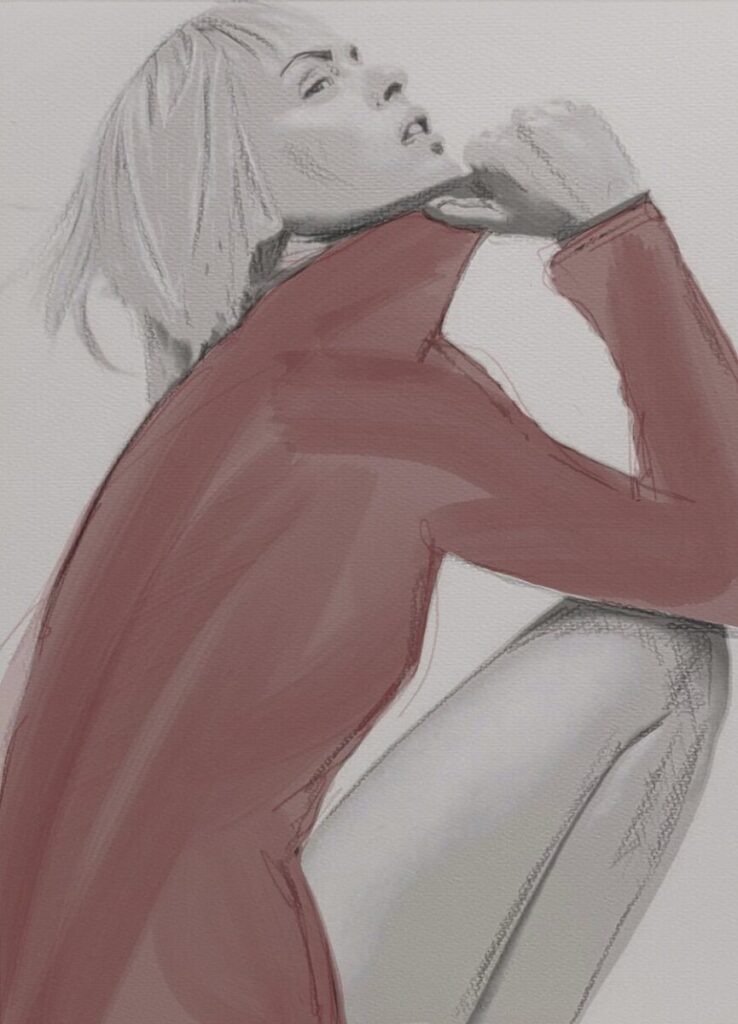
Interview with Carlotta Hey
Each character or figure in my work embodies not just a fashion statement but also a broader exploration of identity.
With a background in fashion design and styling, your work is often inspired by a creative
community of esteemed designers and visionary fashion icons. Through this diverse
perspective, allowing you to continuously evolve your beautiful aesthetic, what are some
of your favourite elements of combining wearable art with traditional illustrative
techniques?
One of my most favourite aspect in illustrating is the opportunity to explore textures in new and innovative ways. Fashion design is inherently tactile, and I enjoy translating that physicality into my illustrations. By focusing on how different fabrics—like silk, leather or lace — interact with light and shadow, I can convey a sense of depth and realism. This emphasis on texture allows viewers to almost “feel” the garment through the illustration, adding an emotional connection to the artwork. I also find that fashion has a unique ability to tell stories.
Wearable art is a powerful medium for self-expression, and my illustrations seek to highlight this aspect. Each character or figure in my work embodies not just a fashion statement but also a broader exploration of identity. Whether it’s the confidence instilled by a well-tailored outfit or the comfort of a beloved sweater, I aim to evoke strong emotions that resonate with viewers.
The combination of wearable art and traditional illustration creates a dynamic visual language. By drawing from the aesthetics of fashion and the techniques of fine art, I hope my work becomes a dialogue between the two realms. This interplay invites viewers to appreciate the beauty of each element while recognizing the broader cultural and societal implications of fashion as an art form.
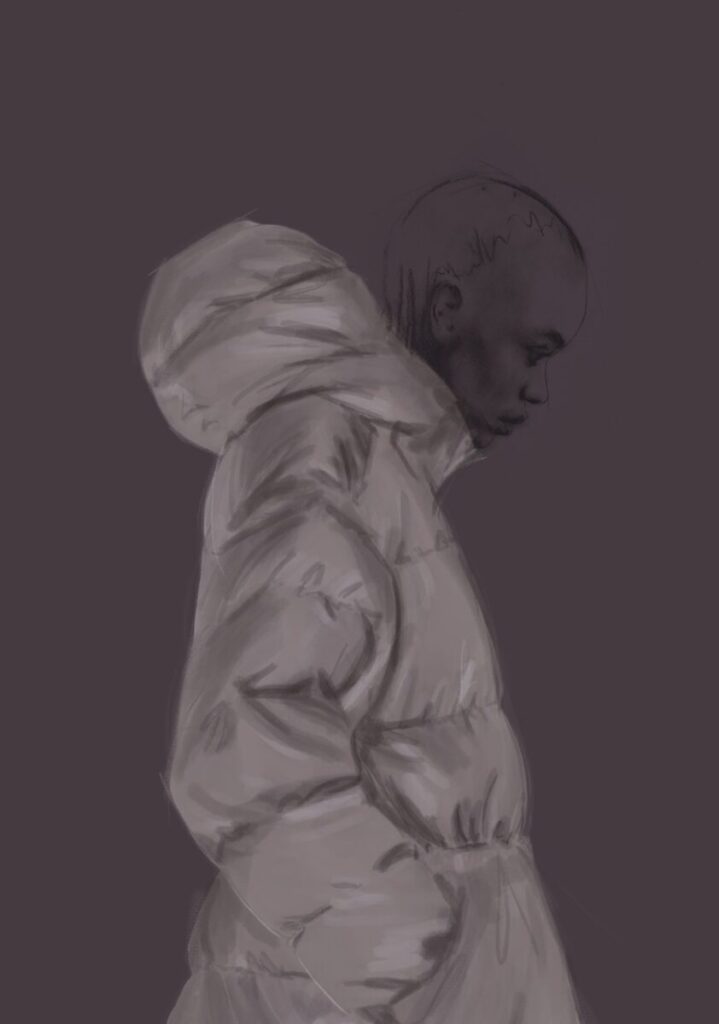
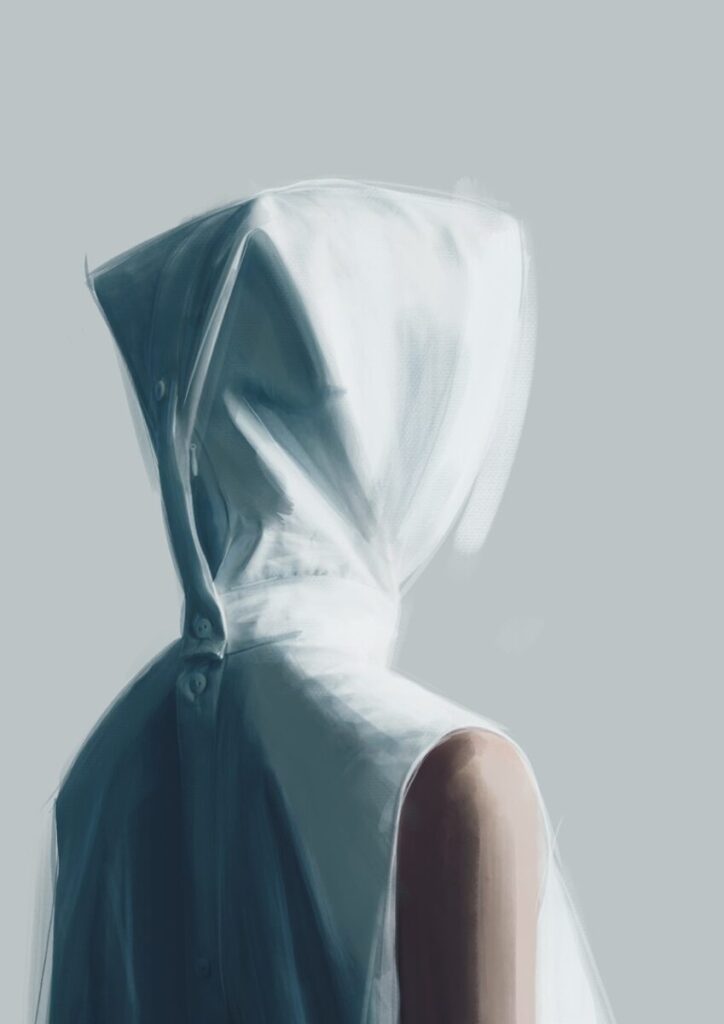
Over the years, artists sometimes find that the creative outlook evolves significantly. How
has yours transformed? As your comprehension of your artistic capabilities deepens, do
you think your work is becoming more nuanced and reflective?
In the early stages of my career, my focus was primarily on technical skills and the execution of ideas within a structured framework. While I was passionate about fashion design, my artistic vision was somewhat constrained by the expectations of the industry. I now realise that art is not just about creating beautiful images; it’s about conveying emotions, telling stories and engaging with the viewer on a deeper level.
With this new perspective, I hope my work has become more layered and complex. I’ve learned to incorporate various themes—such as identity, cultural significance, and personal narrative—into my illustrations. This evolution has led me to explore the emotional resonance of clothing, I’ve also become more attuned to the subtleties of human emotion.
I strive to capture not just the visual aspects of my subjects but also the feelings they may embody. I’ve also learned an artwork doesn’t need to be coloured in from edge to edge to speak loudly, I definitely got more comfortable to embrace simplicity as a powerful tool for my communication. The use of a limited colour palette and minimalist compositions allow me to focus on texture, light and shadow; drawing attention to the intricate details that often go unnoticed.
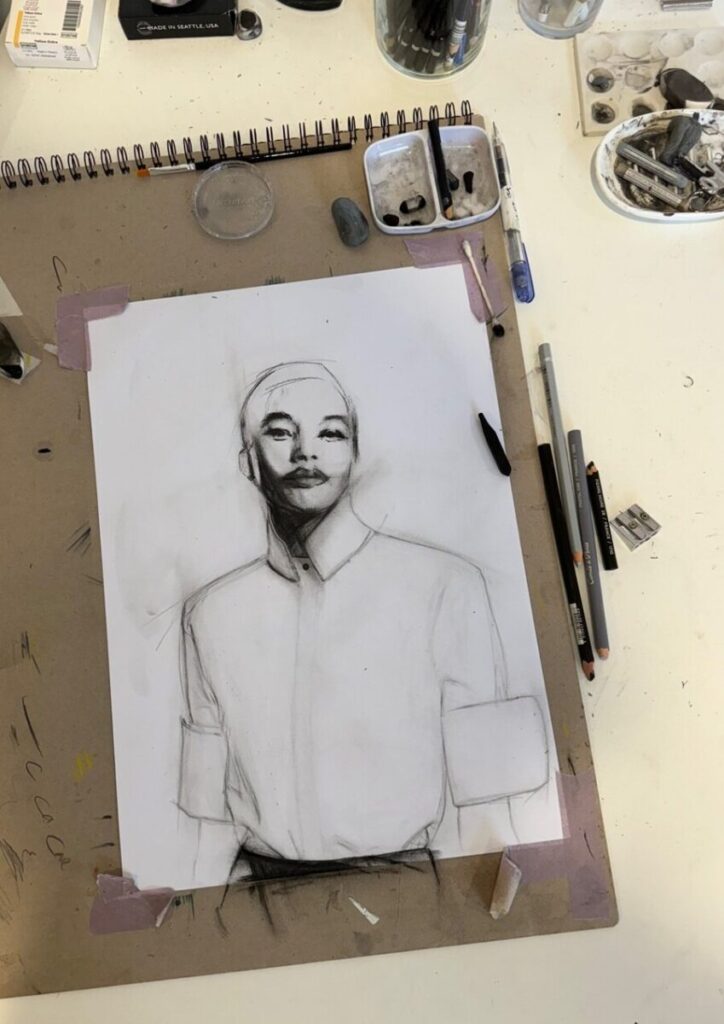
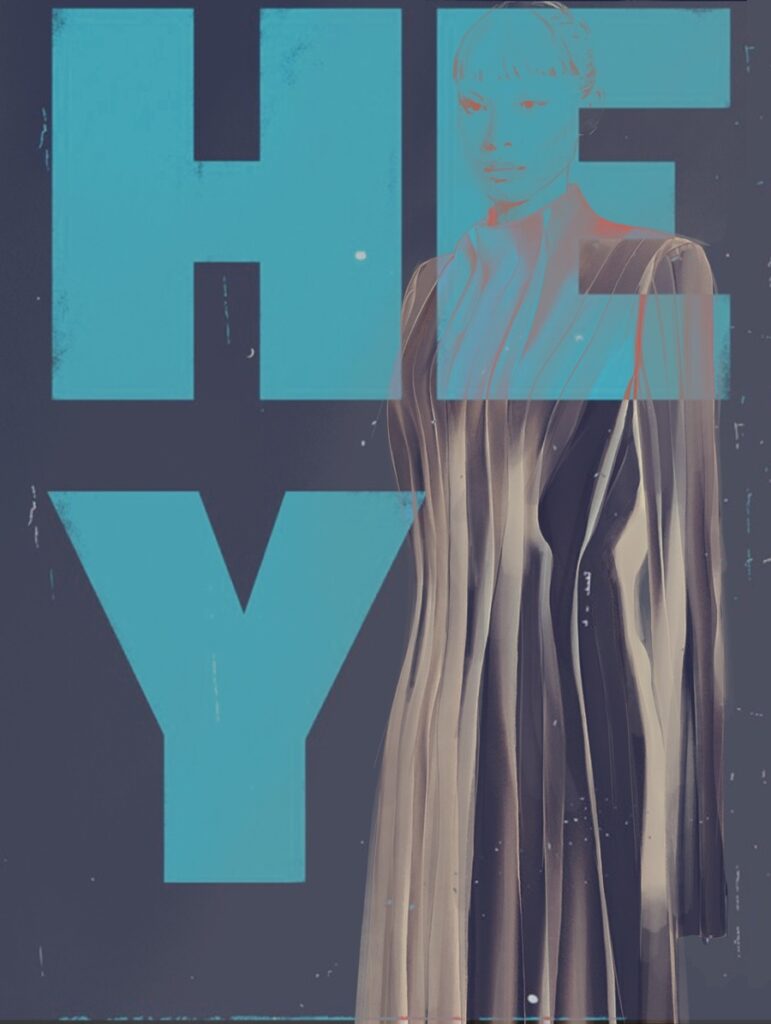
Additionally, do you find that your vision not only mirrors your growth as an individual but also embodies your daily emotions and experiences?
Yes, absolutely. Art has always been a deeply personal form of expression for me. As I evolve, my art evolves alongside me. The experiences I encounter, the challenges I face and the lessons I learn all shape my perspective and inform my creative process. When I create, I often draw from my life experiences—each piece becomes a visual diary of sorts, capturing the essence of where I am at that moment in time. My daily emotions play a significant role in shaping my artistic vision.
The feelings I experience definitely find their way into my illustrations, my artistic practice often serves as a means of processing and reflecting on my everyday life. The themes I explore —identity, culture, and the significance of clothing — are all influenced by my interactions with the world around me.
When in the studio, do you start with a specific routine or practice that sets the tone for
your creative process? Could you share what a typical day entails when you’re working?
I often start my day with a simple ritual to set a positive tone for my creative process.
This might include a quiet moment of reflection with a cup of coffee, allowing me to gather my thoughts and intentions for the day. I take a few minutes to appreciate the atmosphere of my studio — the light streaming in, the array of materials, and the memories tied to all the artworks around me. Once I feel ‘at peace’, I walk through my various workstations.
Going through my past works, serves as a great way to reflect on past projects and revisit ideas that inspired me. I find that looking back at my previous work can spark new ideas.
Each area is designated for different aspects of my creative practice — whether it’s a space for detailed pencil work, a corner for messy charcoal sketches, or my big table for organizing all my materials. This exploration helps me to connect with my mood and decide where to focus my energy. Depending on how I feel that day, I might gravitate toward one workstation over another. If I’m feeling precise and contemplative, I may sit at my drafting table, meticulously working on detailed pencil illustrations.
On days when I feel more spontaneous and expressive, I might pick up my charcoal sticks. There’s something liberating about the freedom of charcoal — getting my hands dirty and really smudging the colour into the textured paper. Other days, I might organise my sketchbooks and folders. Going through my past works, serves as a great way to reflect on past projects and revisit ideas that inspired me. I find that looking back at my previous work can spark new ideas.
What are some of the fun activities, hobbies, or pastimes you indulge in when you step
away from your creative environment?
If I am not in my studio, I am on the road… always trying to refresh my perspective as well as introducing my 9 year old to ‘the world of wonders’ out there. Visiting family and friends back in Germany, travelling to different continents + cultures and even if it often requires a bit of convincing, I try to get my son excited about art. I want him to appreciate the beauty and significance of the world around him, and travel provides the perfect backdrop for these lessons. Each adventure together is an opportunity to see new things, expand our understanding and create lasting memories, which then inspire new ideas.
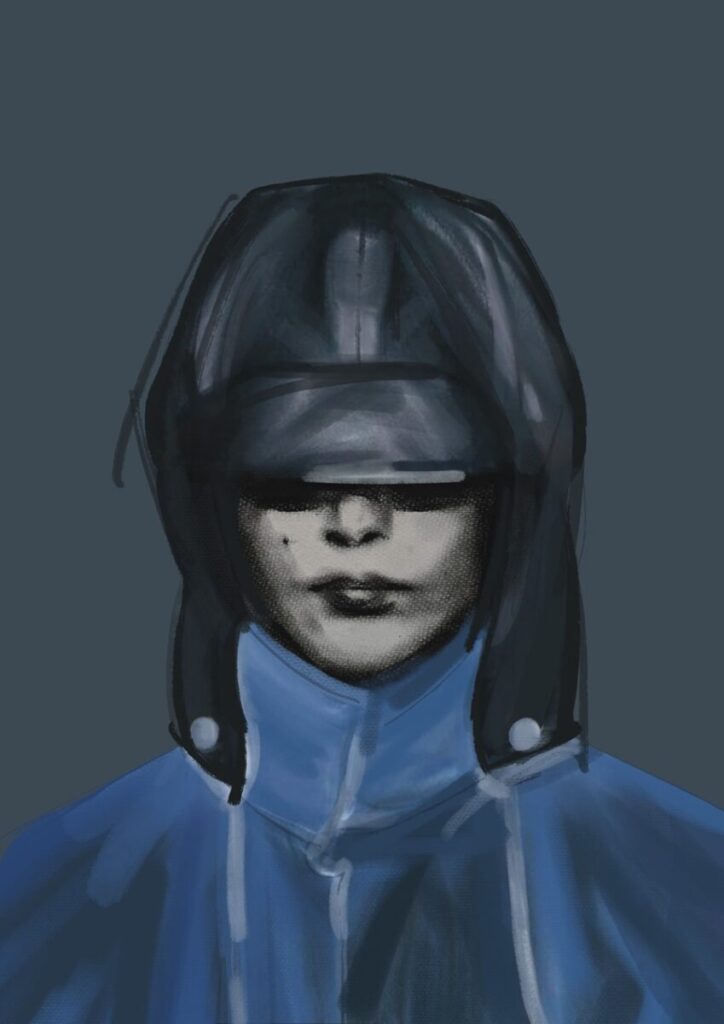
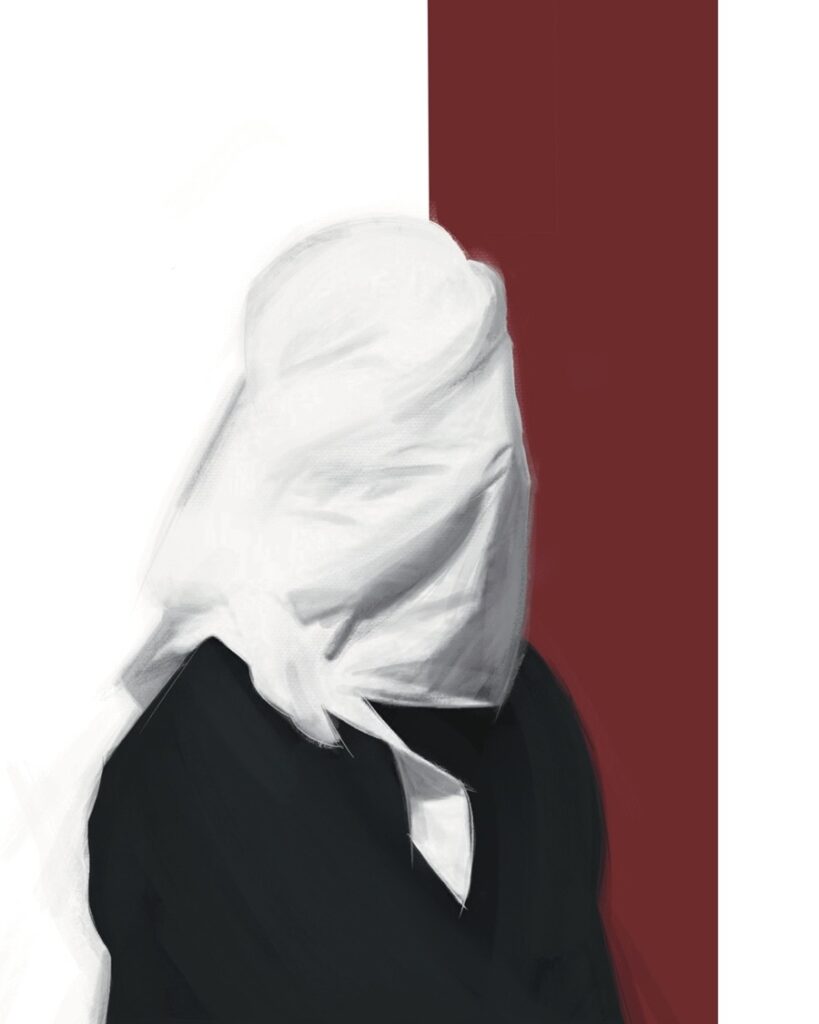
Front row, most memorable show?
One of my most memorable shows was definitely the finale of last year’s Melbourne Fashion Festival. It was an unforgettable experience that saw the audience storm the runway after the final walk and dance like no one was watching! The line-up featured Australia’s coolest emerging designers who paid homage to the retro club scene with maximalist styling, eclectic textures and bold colours. The show embodied the unique, diverse and creative essence of what makes Melbourne every bit different. It was a celebration of fashion and community that I will never forget!
Favourite fashion pieces you can’t live without?
I am a big fan of the capsule wardrobe. Just like my artworks, my wardrobe aligns with my minimalist philosophy. My favourite pieces will have to be a good pair of jeans and a white tank top.
In “Humanity and Mechanism,” I aim to illustrate characters that embody a spectrum of emotions— vulnerability, strength, introspection — highlighting the importance of maintaining our emotional humanity amidst the mechanized aspects of our modern life.
Your evolving series ‘Humanity and Mechanism’ is an intriguing blend that merges
fashion-inspired illustrations with the rapid strides in technological advancements. What
sparked the idea for this unique collection and what are the underlying influences?
The idea for this series was sparked by the experience of living in a time where technology is reshaping our lives, our relationships and our self-image. One of the primary influences behind “Humanity and Mechanism” is the cultural shift towards a more technology-driven society. As I observed the rapid advancements in technology — such as artificial intelligence and virtual reality — I began to reflect on how these changes impact our understanding of what it means to be human. Another underlying influence is the ‘search’ of emotional connectivity in a world that often feels increasingly disconnected. While technology can facilitate day to day communication, it may create a barrier to a real and genuine connection.
In “Humanity and Mechanism,” I aim to illustrate characters that embody a spectrum of emotions— vulnerability, strength, introspection — highlighting the importance of maintaining our emotional humanity amidst the mechanized aspects of our modern life. This theme fascinates and worries me at the same time, as I believe that even in a technologically advanced society, our emotions and connections must remain the core of our humanity.
To bring this vision to life, I utilize a combination of traditional illustrative techniques and digital elements. By merging hand-drawn illustrations with digital enhancements, I can create a visual language that reflects the interplay between the human and the mechanical. This approach not only allows for a dynamic aesthetic but also emphasizes the concept of hybridity—where the organic and the synthetic coexist and influence one another.
Ultimately, “Humanity and Mechanism” is an exploration of the potential futures we face as individuals and as a society. It raises questions about identity, authenticity, and the role of technology in shaping our experiences. I hope that viewers engage with the series not only as a commentary on current trends but also as an invitation to reflect on their own relationships with technology and the ways in which it impacts their identities and emotional lives.
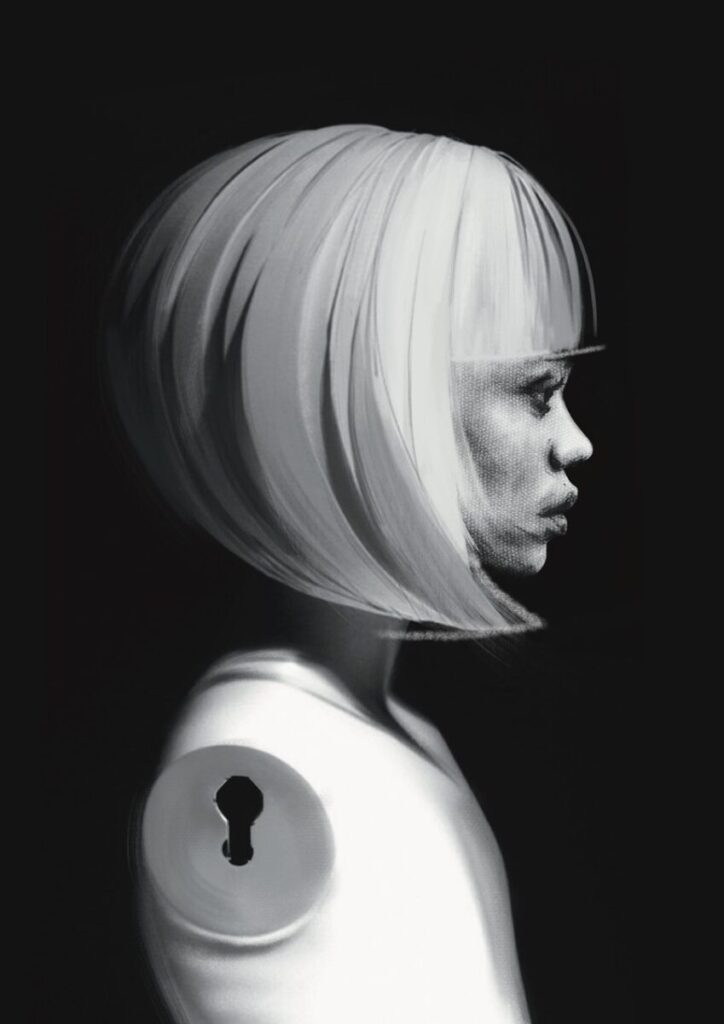
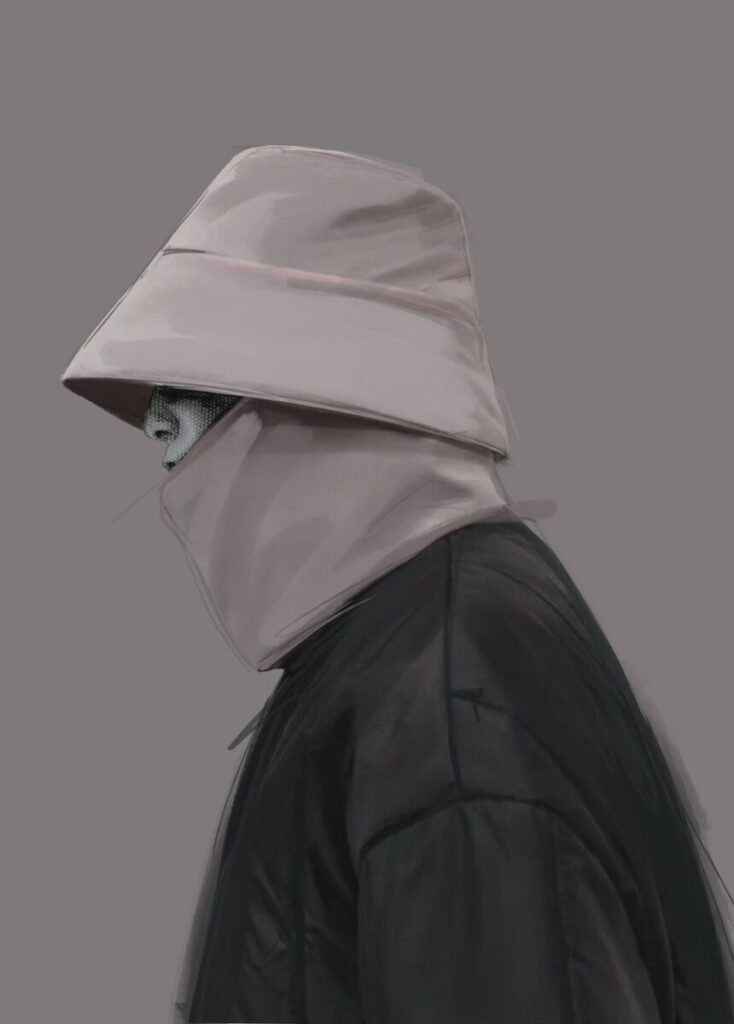
How do you see the relationship between humans and technology evolving? Can we cultivate a mindful relationship between humanity and technology?
The relationship between humanity and technology is a paradox—we create machines to enhance our lives, yet we often fear that they might erode our humanity. On one hand, technology extends our capabilities. It allows us to connect across distances, overcome physical limitations, and even augment our cognitive abilities. Tools, from the wheel to artificial intelligence, have always been an extension of human ingenuity. In this sense, technology enhances humanity by amplifying what makes us human: creativity, curiosity, and adaptability. On the other hand, as technology becomes more autonomous and integrated into daily life, there’s a growing concern that we are losing something essential.
Automation replaces human labor, social media reshapes relationships, and AI even challenges traditional notions of creativity and intelligence. The more dependent we become on machines, the more we question our own role in the equation—are we in control, or are we being shaped by the very things we create?
Perhaps the key is balance. If we engage with technology mindfully, using it to support rather than replace human connection, critical thinking, and emotional depth, then we are enhancing humanity. But if we allow it to disconnect us from our fundamental human experiences —empathy, presence, and reflection—then we risk losing what makes us truly human.
So the question isn’t just about what technology does to us, but about how we choose to engage with it.
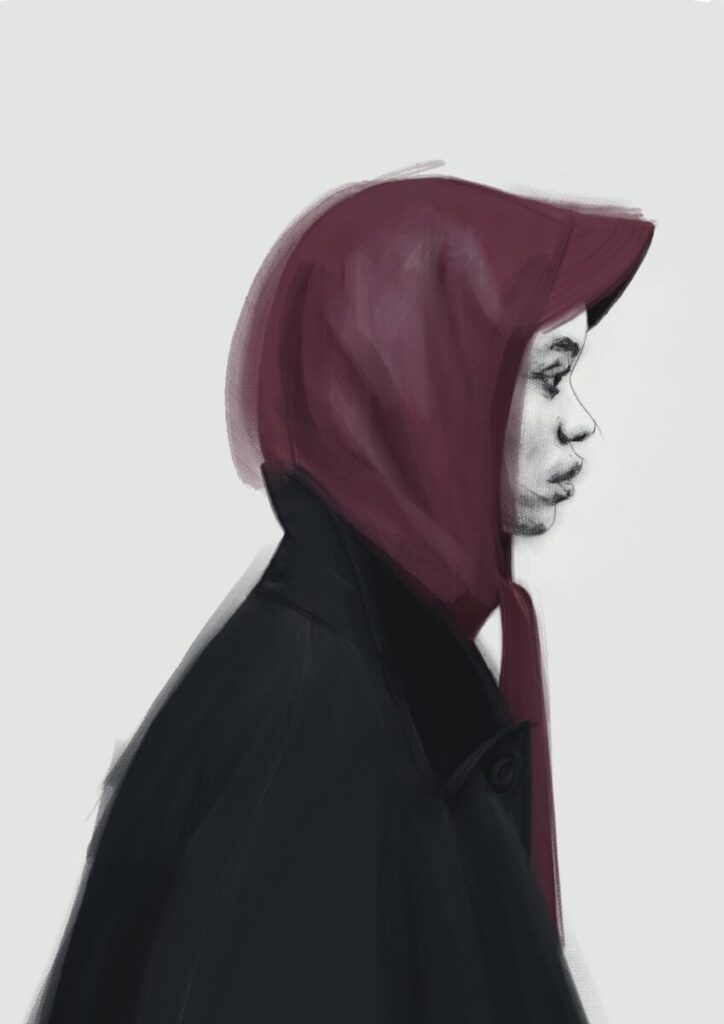
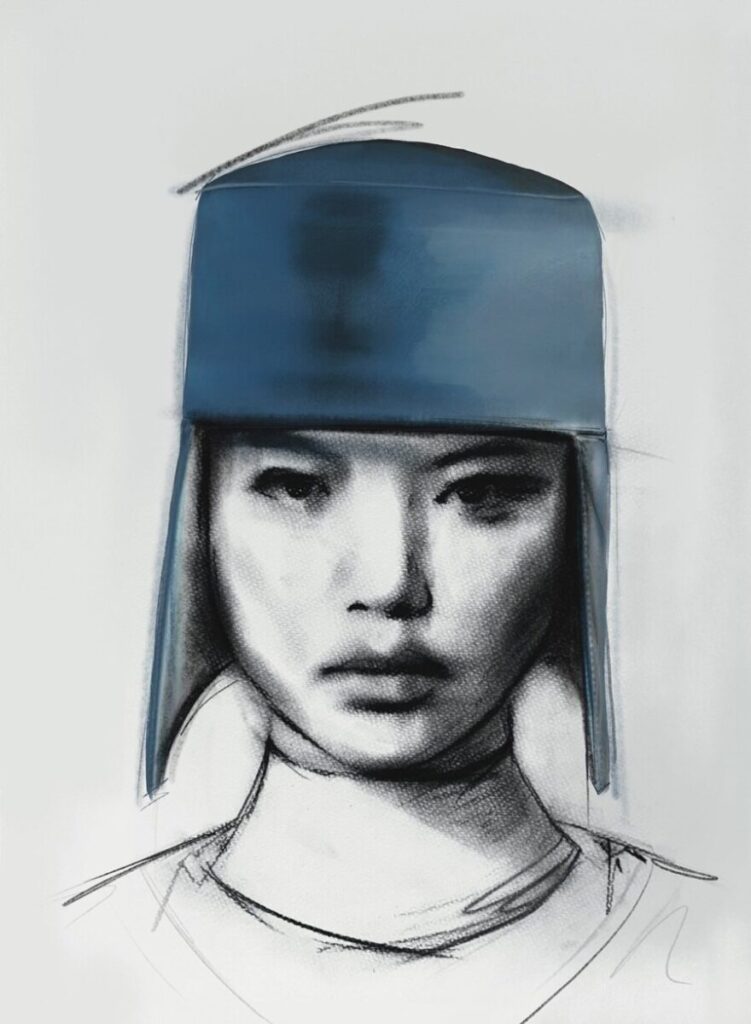
How is 2025 looking for you? What else are you working on that we can look forward to?
As I reflect on 2025, it’s shaping up to be an exciting and transformative year for me. I’m currently focused on a new concept regarding wearable art, which will play a significant role in my upcoming projects.
In addition, I am expanding my artistic practice by exploring larger and slightly unusual formats, allowing me to create more immersive works that capture the intricacies of my artistic vision. I also have an exhibition lined up, providing a great opportunity to share my latest series and engage with a wider audience. Moreover, I am collaborating with another artist, which I believe will bring fresh perspectives and inspire new ideas in my work. This collaboration is a fantastic chance to experiment and combine our creative strengths, resulting in something truly unique. I can’t wait to see where this year takes me.



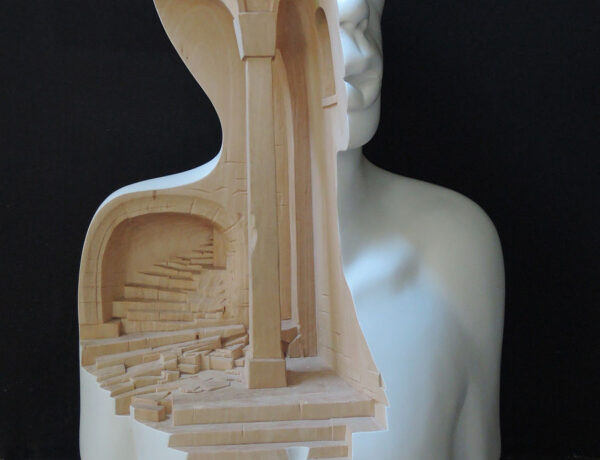
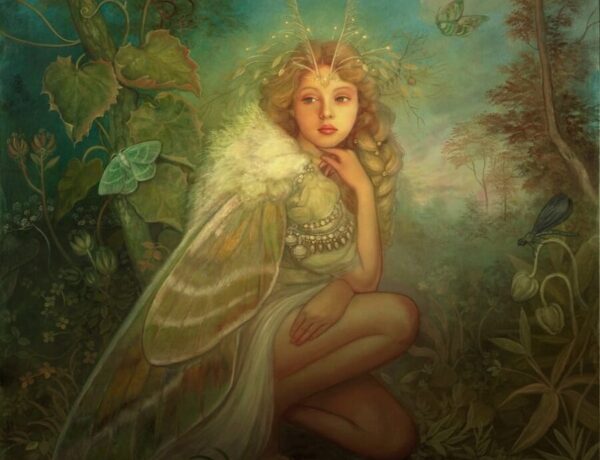

No Comments